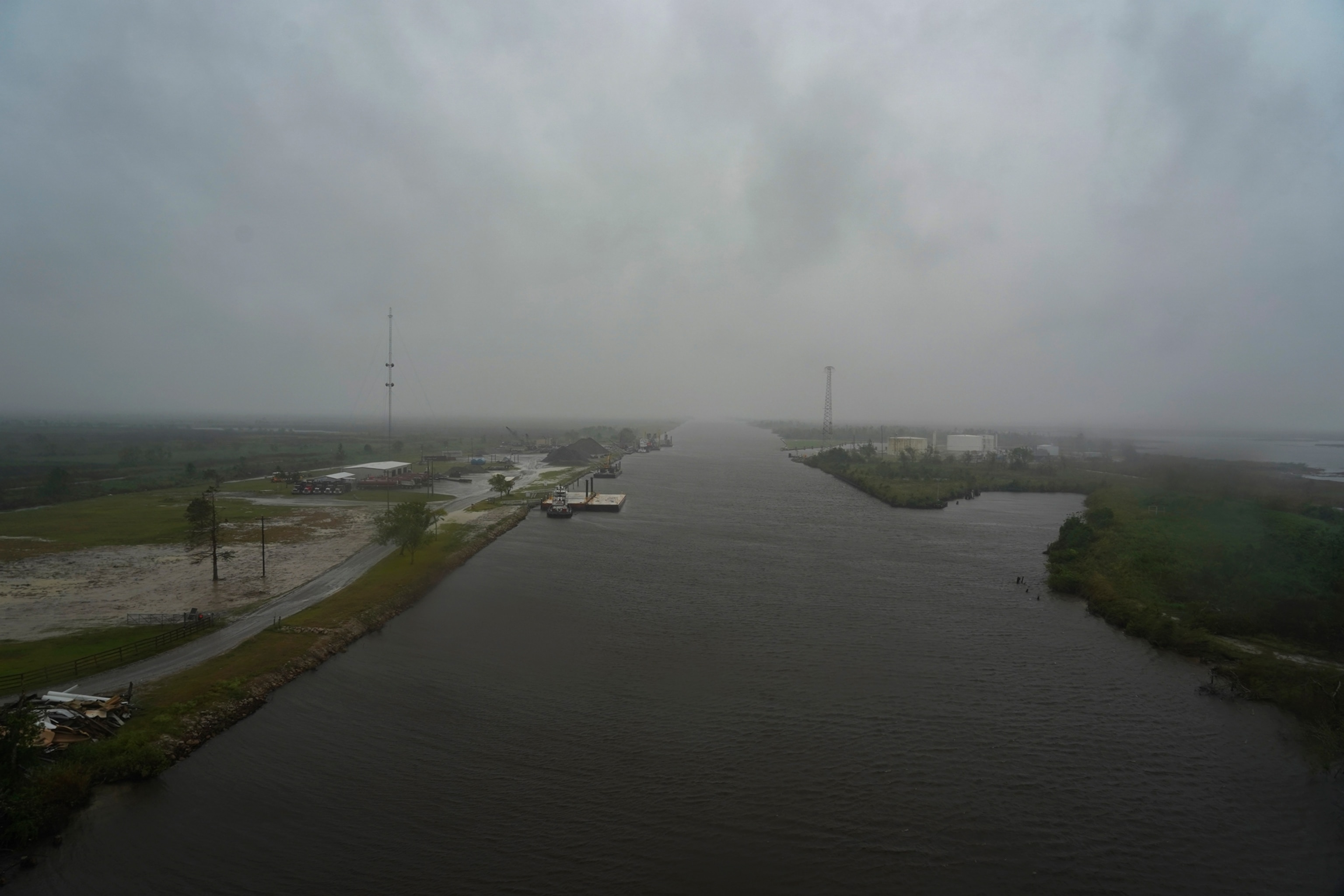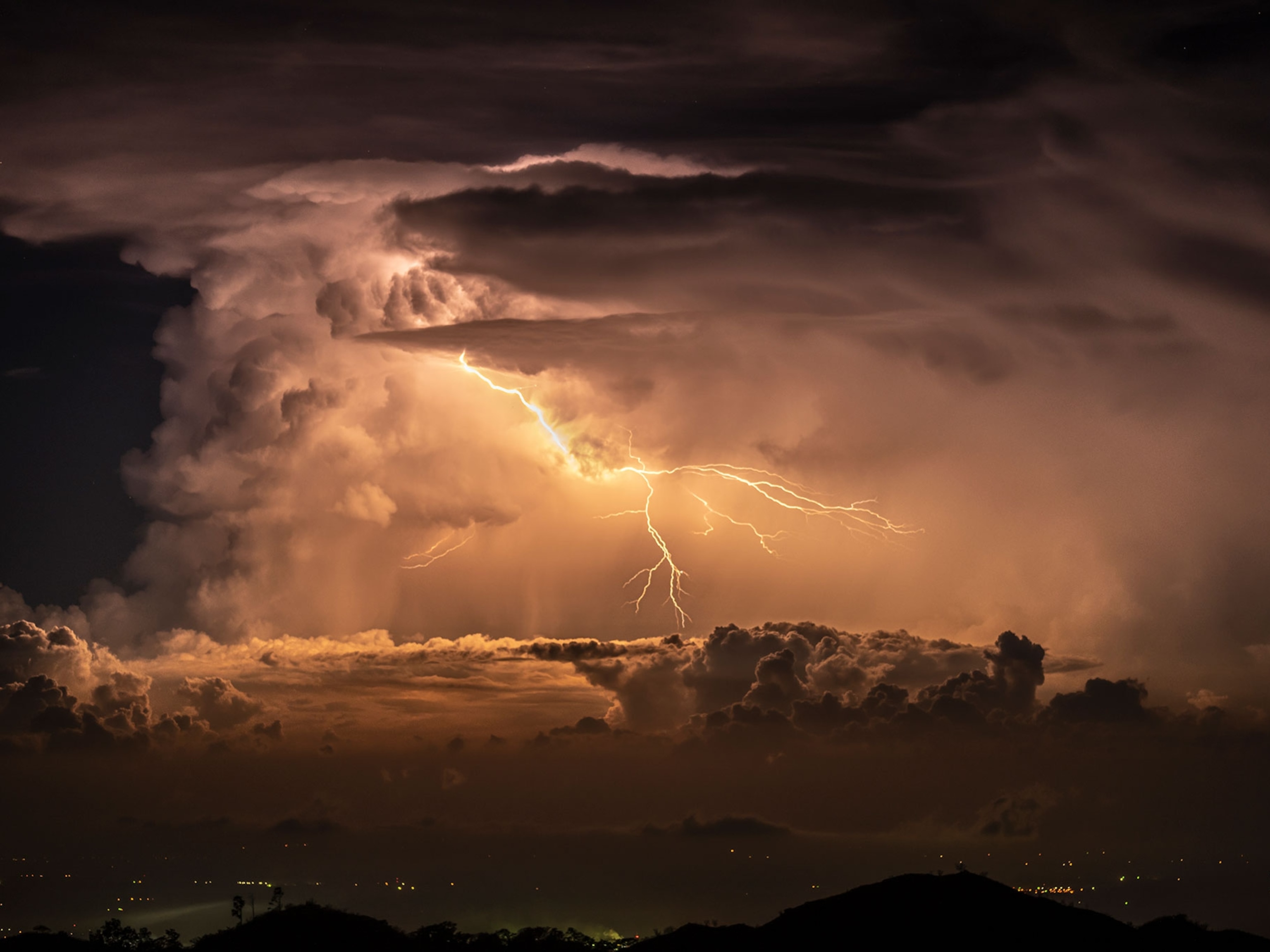
Tropical storms can sometimes ‘supercharge’ the storms that follow
In 2018, a tropical storm teamed up with a heat wave to strengthen a hurricane—a storm-fueling scenario that might happen more often as the planet warms.
This hurricane season has already been one for the record books. The season’s 25th named storm, Delta, is closing in on the already-battered Gulf Coast—and there’s still another few weeks of the official season to go. The hot Gulf waters that have super-fueled Hurricane Delta are becoming more common as the planet warms, as is a combination of factors that can make big, fast-growing storms more dangerous.
A new study, published last month in Nature Communications, shows how one storm’s effect on hot, shallow Gulf waters—coupled with hot weather—created the conditions to amplify the next storm that came along into something much more powerful.
So far, Hurricane Delta does not appear to be one of those storms. Similar conditions, however, may have been at play to intensify two of this season’s major hurricanes, Sally and Laura, says Brian Dzwonkowski, an oceanographer at the University of South Alabama and the Dauphin Island Sea Lab and the lead author of the study—though he hasn’t yet fully analyzed the data from those storms and can’t confirm that the exact same processes occurred.
How Tropical Storm Gordon helped fuel a monster
In the late summer of 2018, a minor tropical storm named Gordon cruised across the northern Gulf of Mexico. In and of itself, Gordon was pretty standard; like nearly all tropical cyclones, it caused millions of dollars of damage and lots of stress for coastal residents.
But it may have set off a chain of events that had dramatic impacts on a much bigger, more devastating storm a few weeks later: Hurricane Michael. That storm intensified quickly as it approached the coast. By the time it made landfall in Florida, it had spun up into a devastating Category 5 hurricane, leading to 16 deaths and billions in damages.
The two storms were not obviously connected. They were well separated in both time and space—weeks and hundreds of miles apart. But new science shows that Gordon’s effects, in conjunction with a heat wave over the region in its wake, helped Michael intensify into the strongest storm ever to make landfall in the Florida Panhandle.
The scenario “supercharged the ocean battery” that powered the very intense hurricane, says Dzwonkowski.
Tropical cyclones feed on hot ocean waters. Warm water acts as storehouse of energy that storms can draw on, like a battery: the hotter the water, or the more of it there is, the more energy can be transferred into the air above. Cold water, in contrast, can drain energy from a storm.
Summer sun heats the top layer of the ocean. But usually, the water below the hot layer stays cool. When a storm travels over the ocean, churning the water in front of it with its winds, it will often pull cold water from the depths to the surface. Interacting with that cool water will sap the storm’s energy and weaken it. Scientists have shown that this process de-escalated storms such as 2011’s Irene, which still wreaked havoc on New York when it landed.
“In that case, winds were strong enough to mix it, which produced the cold water and weakened the storm,” says Greg Seroka, an oceanographer at NOAA.
But that can only work when there is cold water somewhere close at hand—maybe in a big, swirling eddy, or below the surface. What Gordon did in 2018 was remove cool water from the system entirely.
The waters right near the Gulf Coast along the continental shelf are shallow, and the top layer absorbs a lot of heat during summertime, as the hot sun beats down. In late summer of 2018, the surface waters under Gordon’s path had already heated up to near-bathwater temperatures—about 84 degrees Fahrenheit, well above the roughly 79 degree Fahrenheit threshold scientists often use as a rule of thumb for whether a tropical storm will thrive.
Normally, a storm like Gordon would exhume deeper, potentially cool water upwards. But because it headed northwest, from near the tip of Florida toward the Alabama/Mississippi border where it made landfall, the cold water it stirred up was trapped by the coast and got pushed downward instead—and eventually all the way off the shallow continental shelf. It left behind a uniform slab of super-warm water, about 84 degrees Fahrenheit from top to bottom.
The storm passed. Summer went on. From afar, everything looked normal. But hot water, stretching from surface to the bottom, was not normal at all.
Then, a heat wave settled in over the region—not a record-breaking one, but hot enough that the coastal ocean heated up even more. By late September, the average temperature in the coastal waters was even hotter; the surface got up to nearly 90 degrees Fahrenheit for a while. Scientists have found that ocean surface waters just a single extra degree Celsius warmer (1.8 degrees Fahrenheit) can drive higher-intensity storms.
This “water at the surface that was just burning hot—that’s what was powering up the ocean battery,” says Dzwonkowski. And the heat penetrated deeper the longer the heat wave continued.
So when Michael started its transit across the shelf, heading nearly straight north across Gordon-warmed waters, there was no cold water available to weaken it. The storm sucked up the available energy and intensified, with devastating results.
The chain of events that played out here doesn’t happen every time a storm crosses the continental shelf. One that travels more parallel to the coast, for example, isn’t as likely to shove water downward as effectively. And the subsequent heat wave was crucial: If the weather had cooled down after Gordon, things might have gone differently.
It’s not clear whether this kind of interaction happens often, or whether this is a newly emerging phenomenon. All Dzwonkowski can say is that the water he measured underneath Michael was at least 0.9 degrees Fahrenheit warmer than he’d seen at any other point in the 14-year record.
But “compound events,” where two climate-related hazards interact to make a bigger risk, are predicted to get more common in the future, says Jane Baldwin, an atmospheric scientist at Columbia’s Lamont Doherty Earth Observatory. This could be an example of one previously unknown interaction could get worse.
“The combination of the two events in this scenario is greater than the sum of their parts,” she says. “That’s scientifically interesting—and also scarier from a climate change perspective.”
A bigger storm battery
What this discovery shows, says Tom Matthews, a climate scientist at the U.K.’s Loughborough University, is that we don’t even fully understand the ways climate hazards interact today. That points to a future full of unwelcome surprises.
“There are lots of hazards that may surprise us going forward, because everything in the climate system is moving and changing at the same time, in ways we haven’t seen before. And the sum of two interactions can be far greater than even the combined individual effects of the hazards.”
But there are some robust predictions we can make. A hotter planet means stronger, more frequent heat waves, which could very likely make a version of the supercharged Michael scenario more likely.
Scientists have long shown that the character of tropical storms is changing too; they’re slowing down and getting stronger and wetter over time. There’s also some growing evidence that the number of tropical storms could gradually rise as climate warms further and heats the waters that fuel them. No one yet knows what those changes could do to the Michael-type events.
But pairing more and stronger storms with more and stronger heat waves (“compound” events, in climate-speak) will almost certainly jack up human risks, both in this kind of scenario and in others.
Matthews and his colleagues looked at a different, but similar, question about the dangers of closely successive storms and heat waves. What were the chances, they asked, that a major tropical cyclone, strong enough to potentially knock out power infrastructure, will be followed by an extreme humid heat wave? Right now, the risks are small. But the likelihood of the two disastrous events lining up increases dramatically in a warmer world. If the planet warms by 3.6 degrees Fahrenheit (2 degrees Celsius), we could see those cascading risks align in 11 years out of 30, the study says; at 7.2 degrees Fahrenheit (4 degrees Celsius), they could happen every year.
A climate-changed world is going to be familiar in some ways and completely unknown in others, says Matthews. That earlier storms could influence the fate of later ones was not an obvious or widely understood concept, he says: It was, in many ways, a surprise—and it’s happening now, in a climate that has been changed only a fraction of what’s predicted to occur.
“A changing climate is going to be even more full of surprises,” he says.








